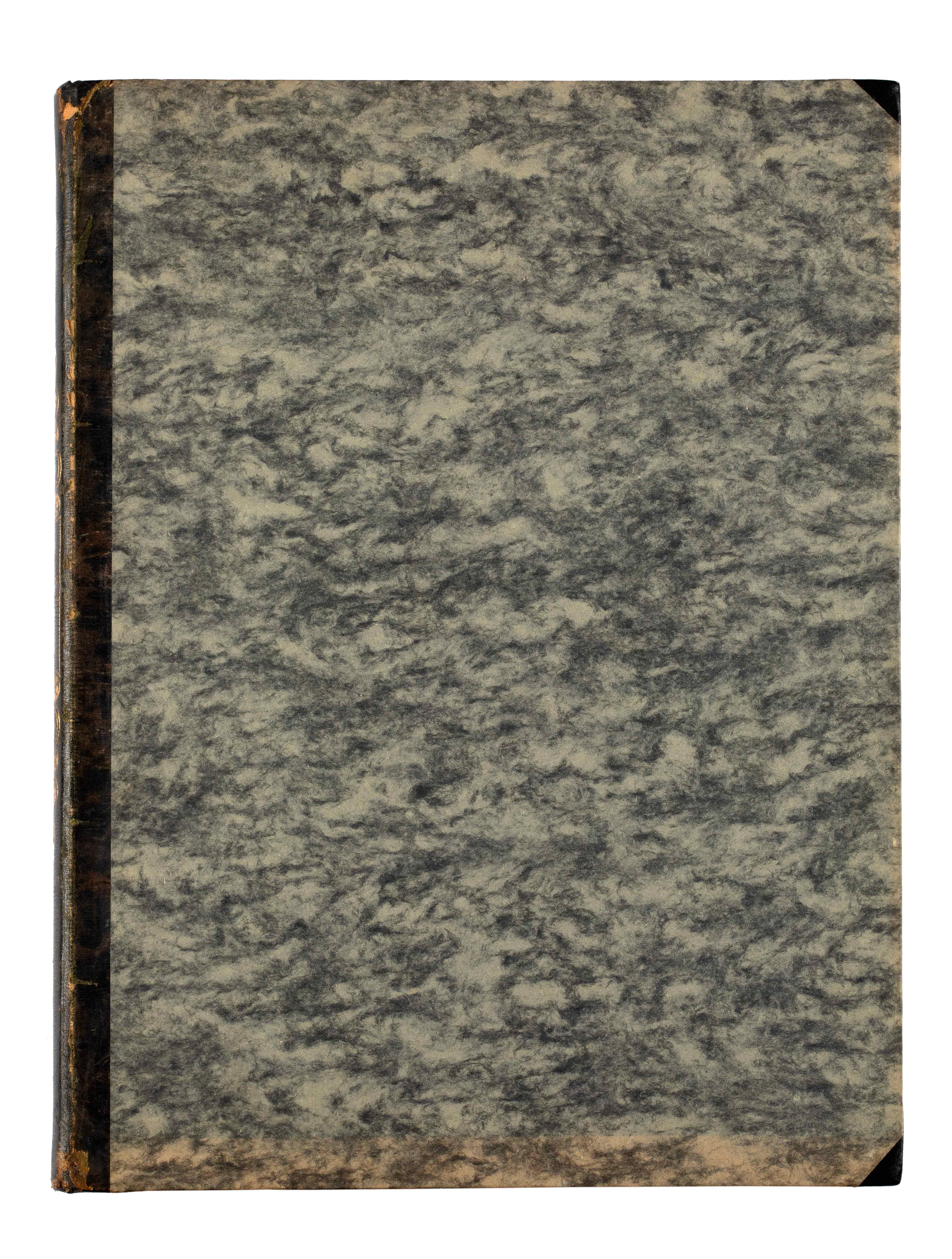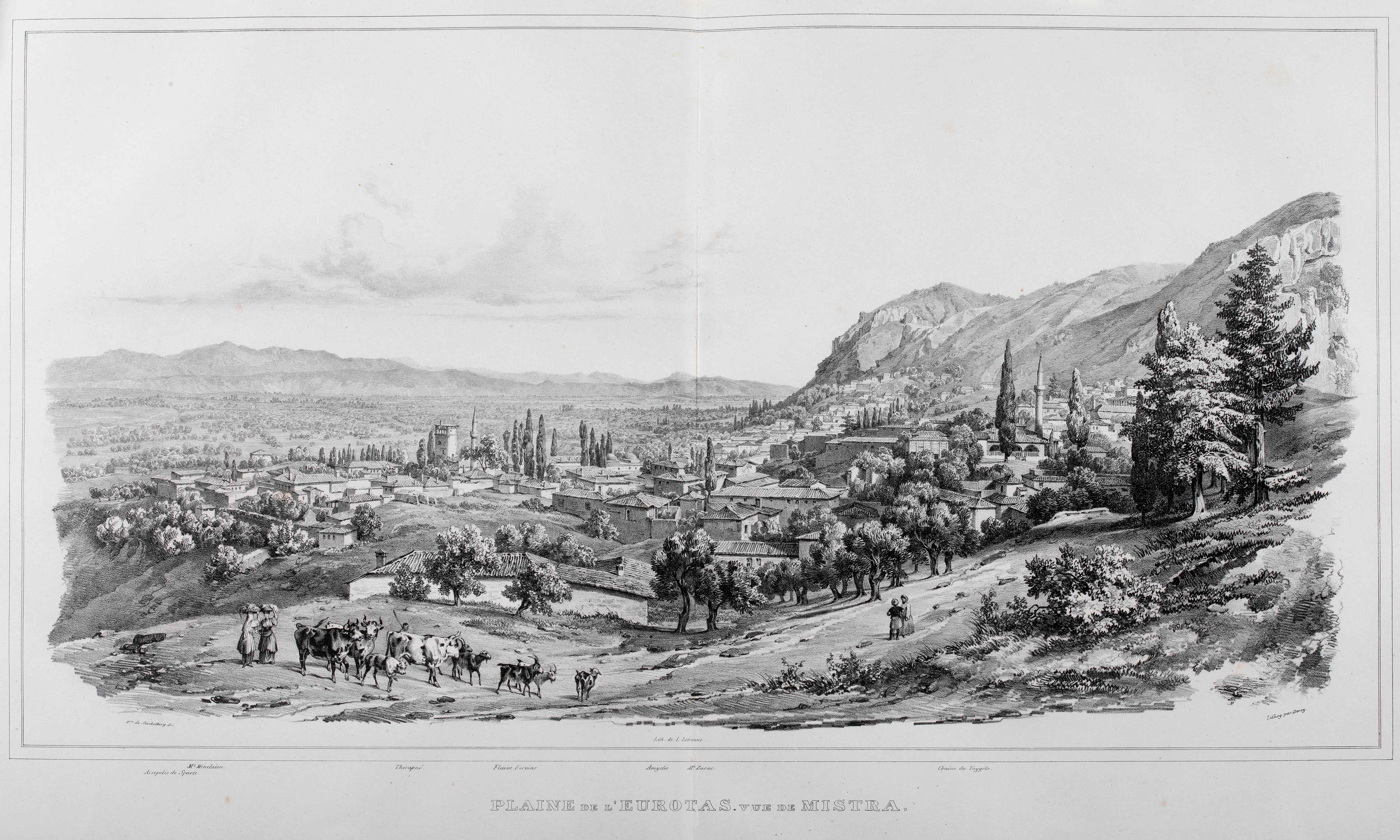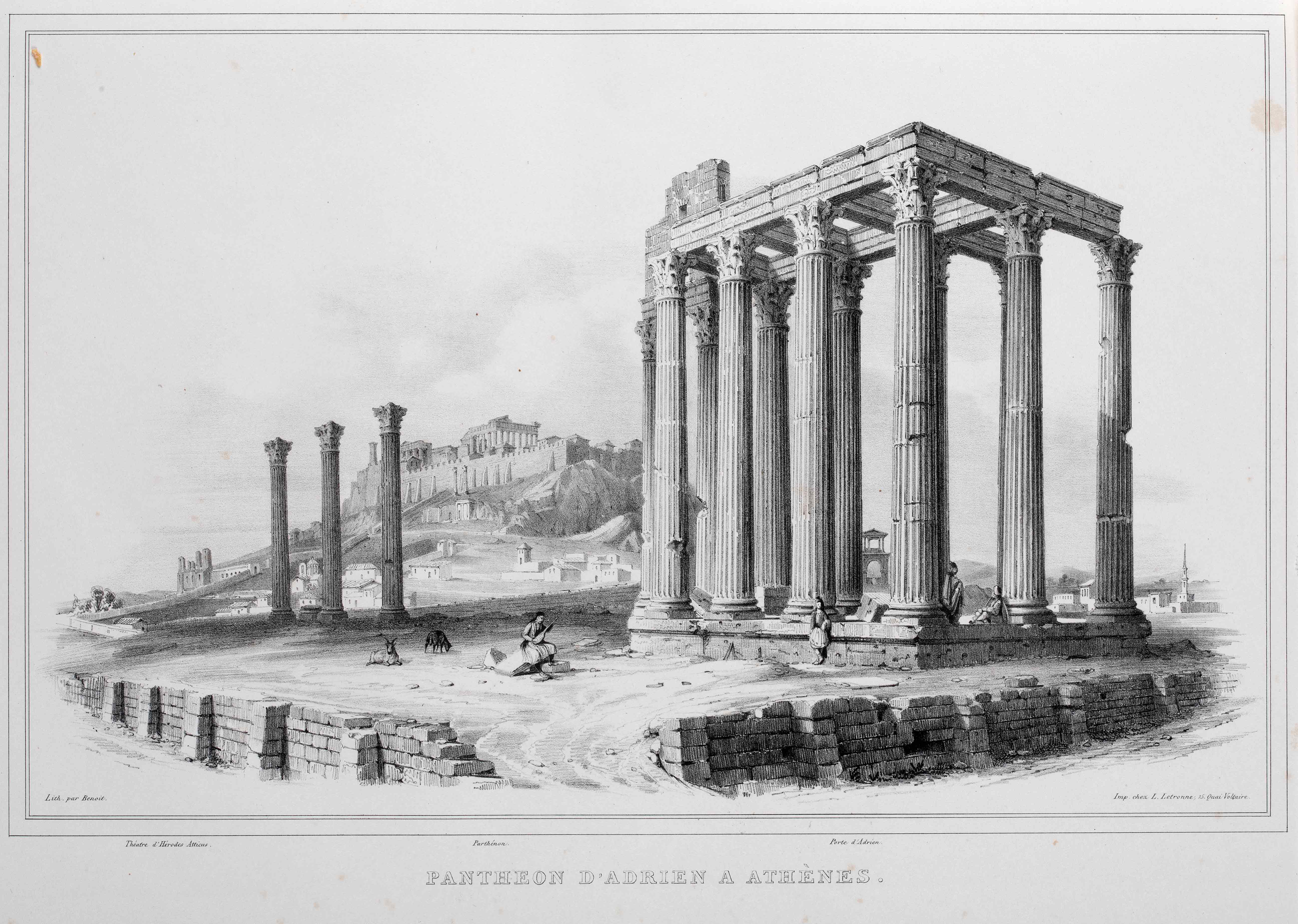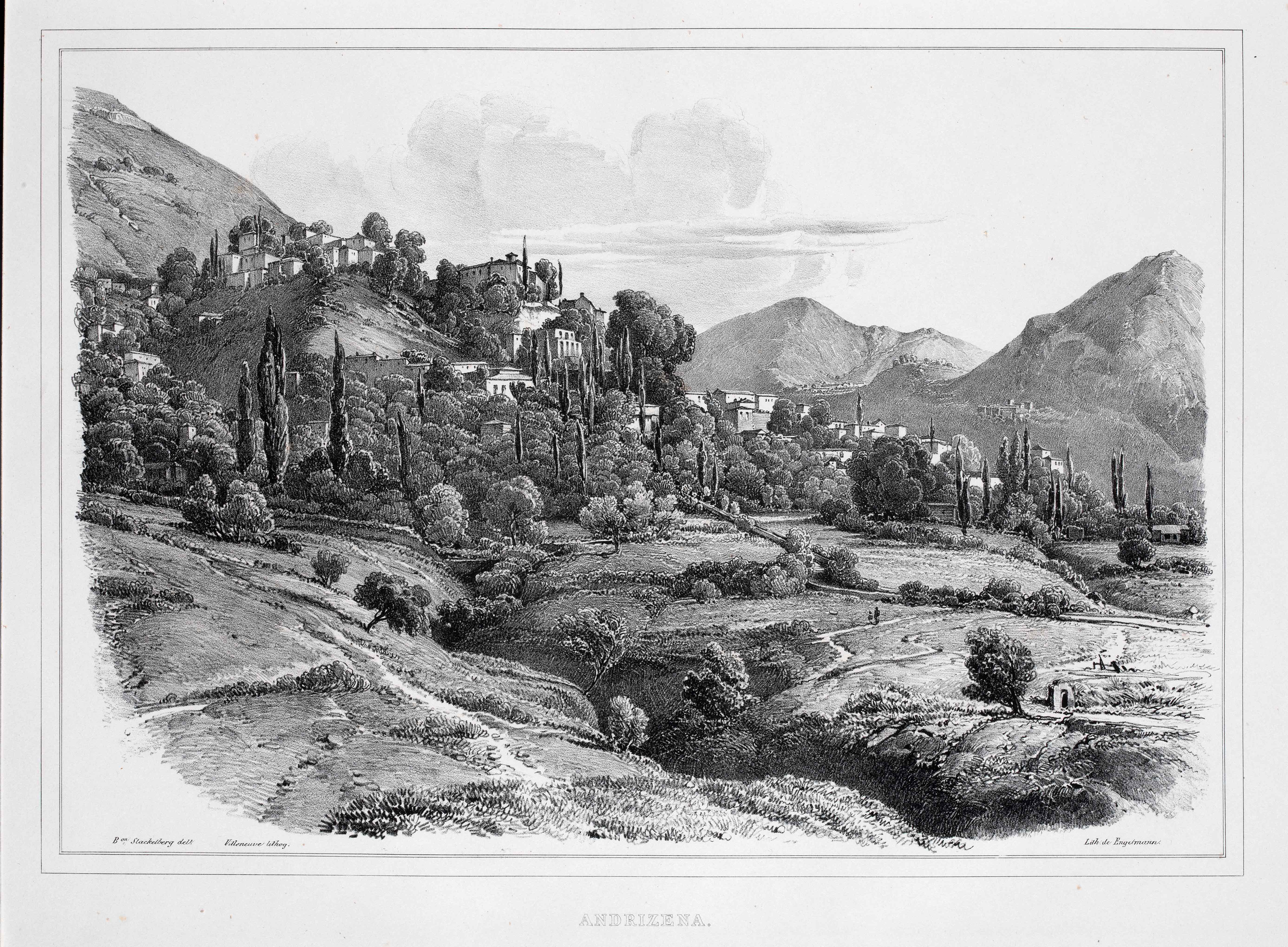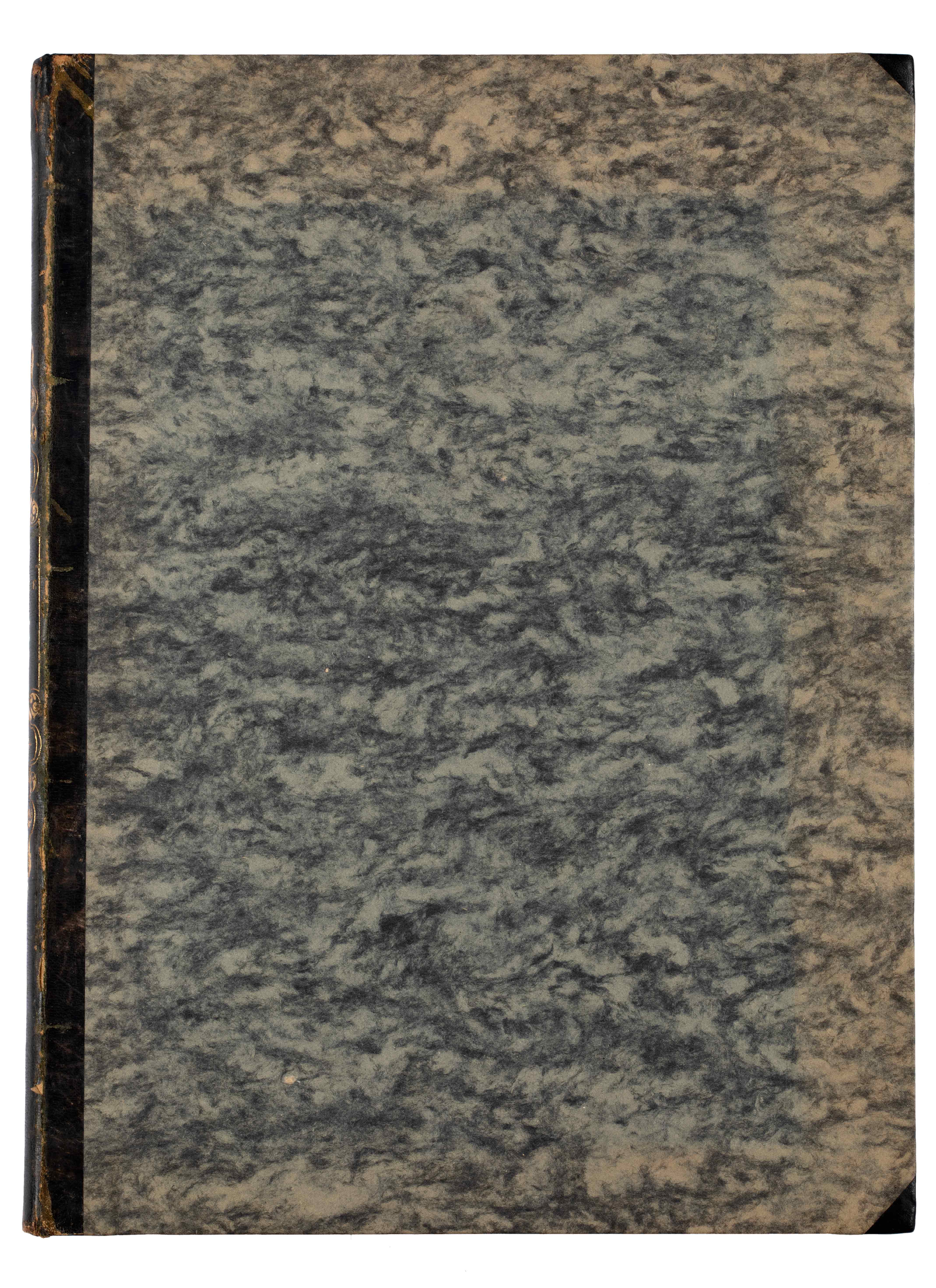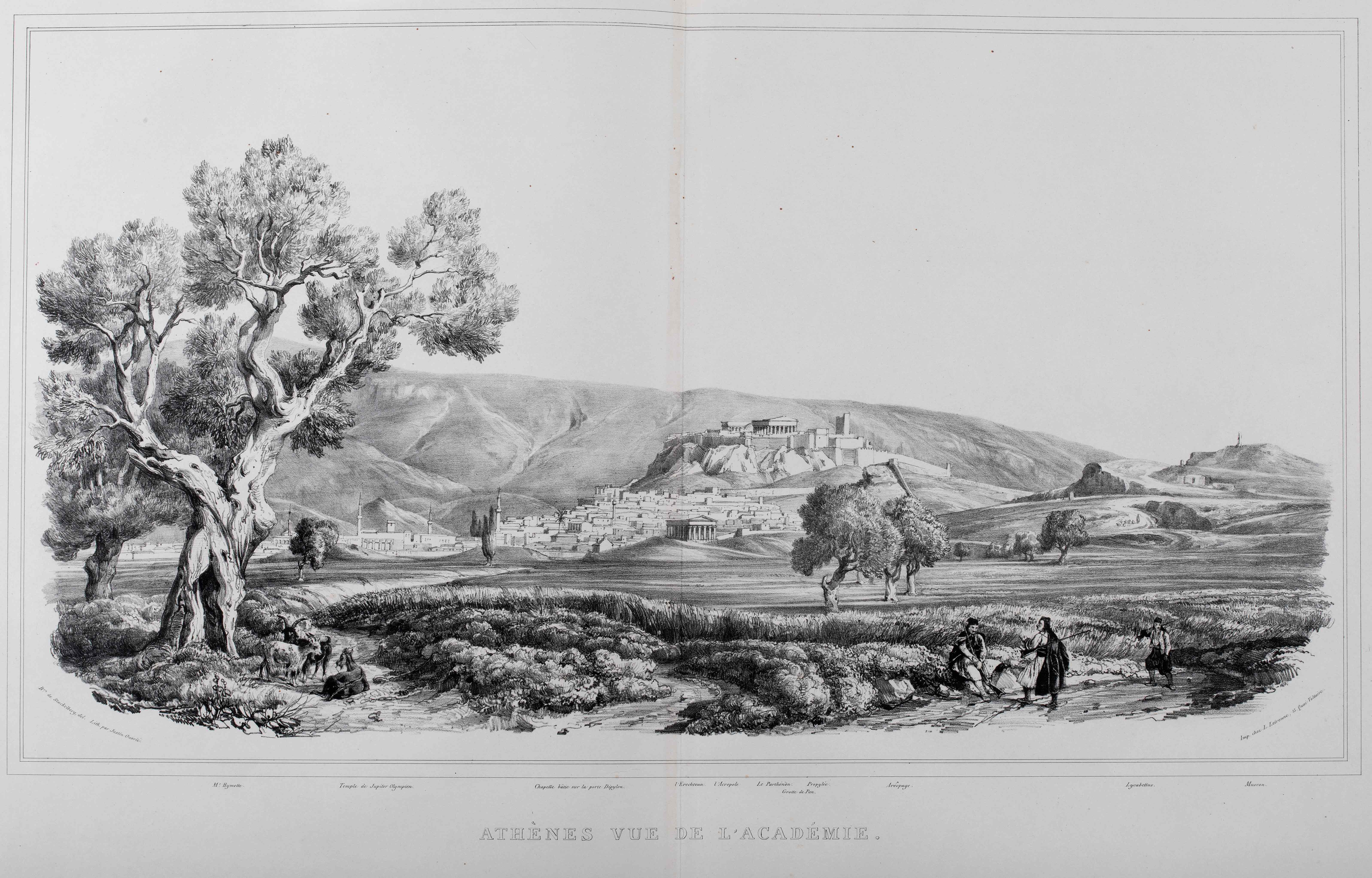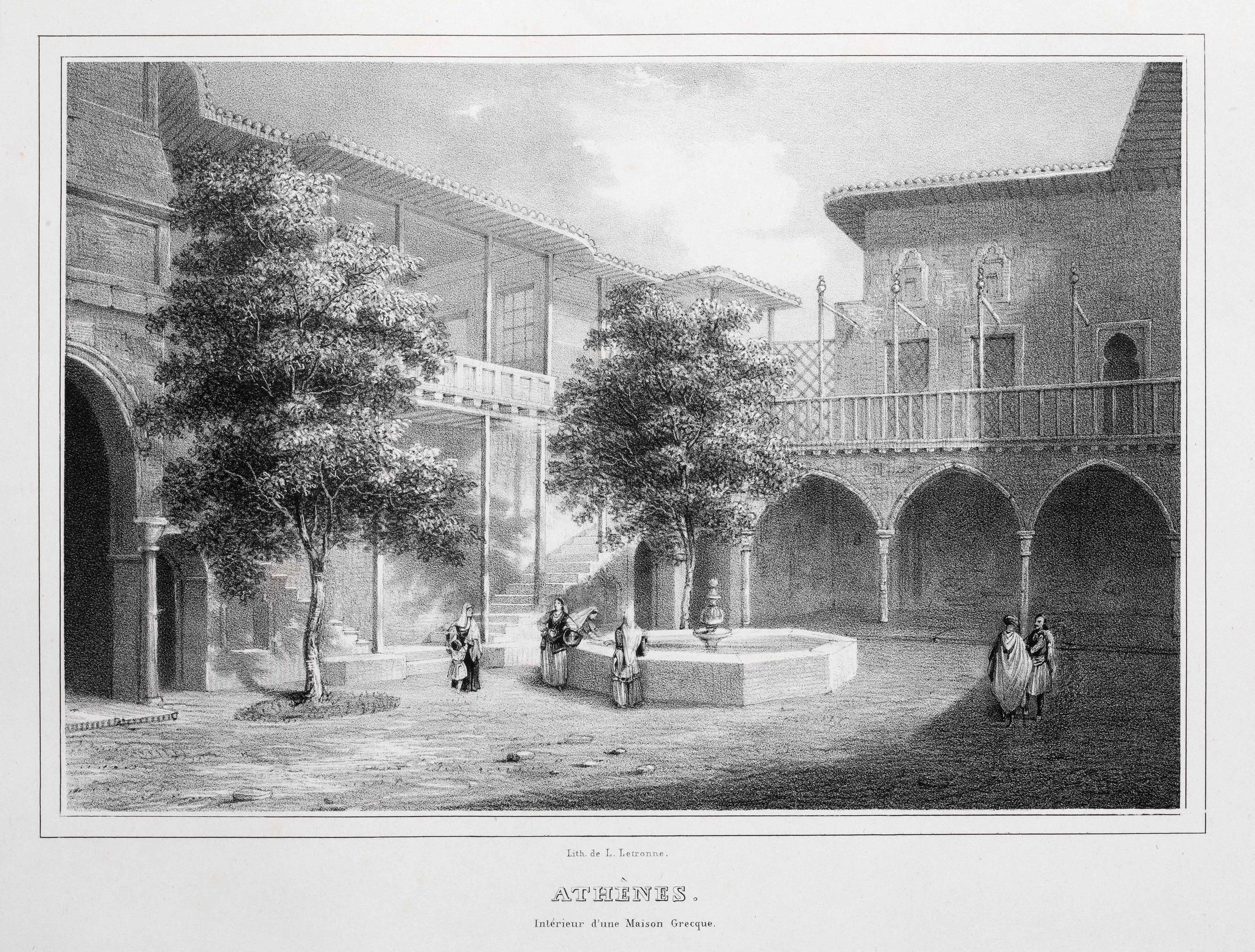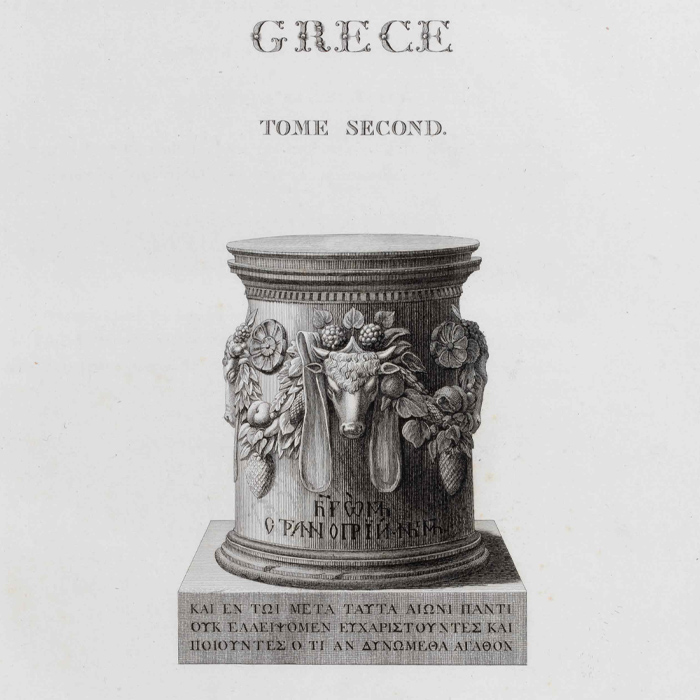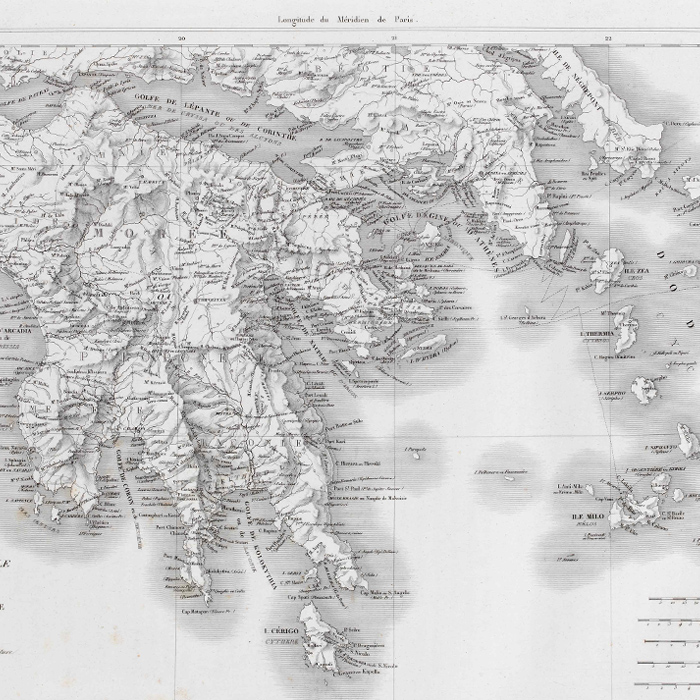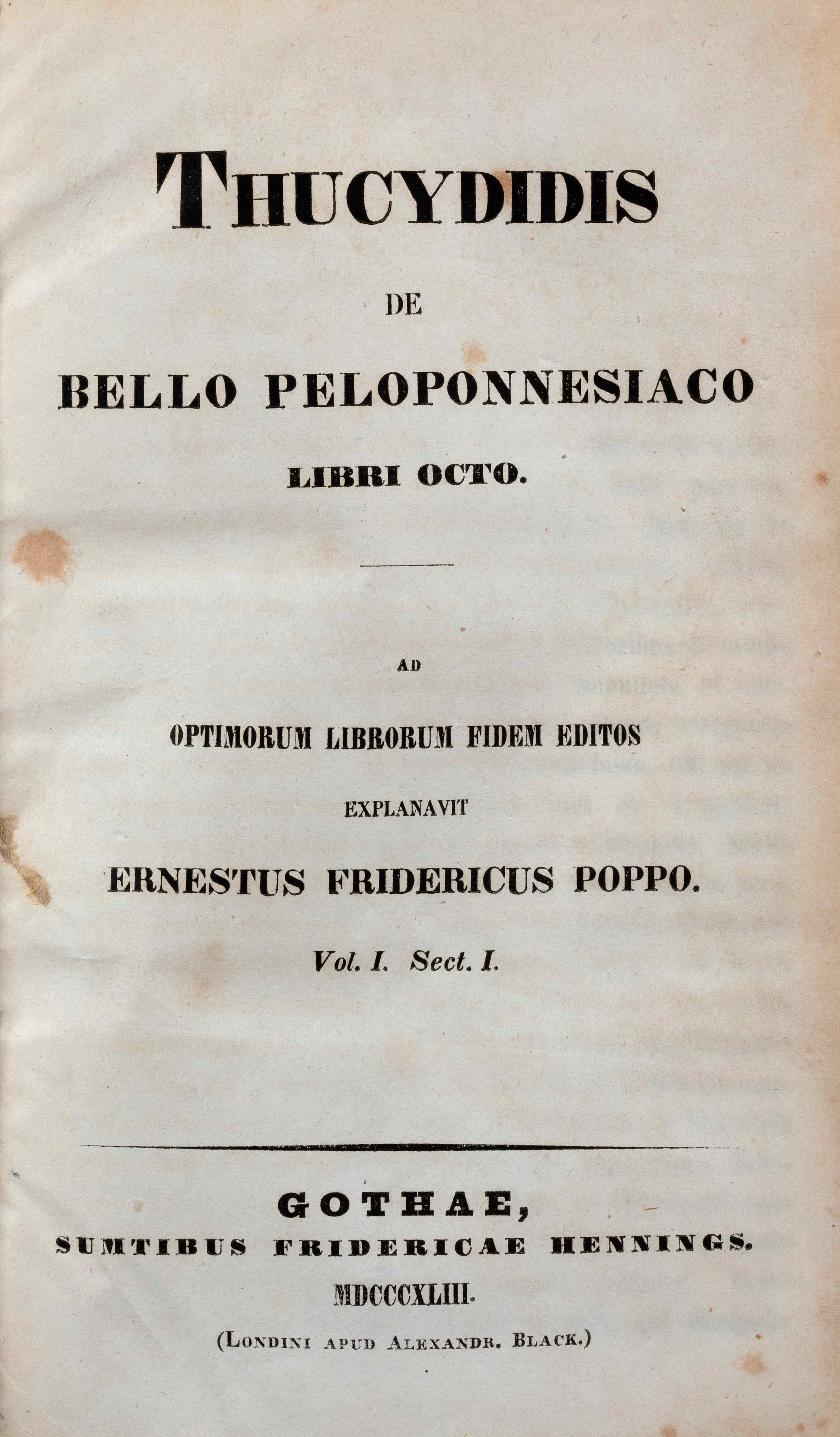La Grèce: vues pittoresques et topographiques
The book La Grèce: vues pittoresques et topographiques is a travel book in 2 volumes, featuring 73 lithographs depicting scenes from every part of Greece. Landscapes, monuments and archaeological sites are presented. The book is a typical sample of the touring trend of the time.
External appearance and illustrations
The book La Grèce: vues pittoresques et topographiques comprises 2 volumes, 38 cm (length) 50 cm (height). The volumes have hardback covers.
It features 73 lithographs depicting Greek landscapes of the time:
- From the Peloponnese, in the 1st volume.
- From the rest of Greece, in the 2nd volume.
A tour of the Greek land
As suggested by the title La Grèce: vues pittoresques et topographiques, the 2-volume book features images from Greece, with a picturesque but also topographical character. The book is a typical sample of the touring trend of the time.
It includes lithographs depicting archaeological sites, monuments and landscapes. O.M. von Stackelberg was able to capture the dozens of scattered Greek antiquities with great detail, presenting, among others, views from Megara, Salamis, Evia, Thessaly, Epirus, Attica and Peloponnese.
A book in the spirit of its time: The Grand Tour
For a long period over the 18th and 19th century, young, wealthy European aristocrats travelled all over Greece. They were accompanied by friends, servants, tutors, doctors, artists and scientists. This type of travelling was called the “Grand Tour”.
In their visits to Greece, the travellers:
- Engaged in nature-watching.
- Admired ancient ruins and monuments.
- Expressed interest in native traditions and behaviours.
- Drew inspiration from Greek philosophy and were charmed by Greek mythology.
Then, the travellers would write an account of their impressions, drawing pictures and paintings of everything they had seen. However, oftentimes they also composed quite complex scientific works.
Otto Magnus von Stackelberg: an energetic traveller and archaeologist
Baron Otto Magnus von Stackelberg (1786-1837) was a German archaeologist, born in Estonia. He travelled around Greece between 1810 and 1814, drawing views, clothing and scenes from the daily life of the Greeks on-site.
His trip to Greece was long and adventurous. He started with his companions from Naples in July 1810 and arrived at Piraeus in September of the same year.
In Athens he was accompanied by British architects and archaeologists John Foster Charles and Robert Cockerell. The team carried out excavations in different areas of Greece.
In 1812 they uncovered sections of the Temple of Apollo at Bassae, near Figaleia (the tier that was uncovered is in the British Museum today), as well as the temple built by Aeacus in honour of Ellanios Zeus in Aegina.
The Alpha Bank Rare Book Collection is not open to the public.
However, you may visit the other collections of the Alpha Bank Library.
